#Breslav
Explore tagged Tumblr posts
Text
Well, I have been talking about some interesting Jewish story ideas lately, and I thought that maybe I should share this one. It's a fanfic idea that is only tangentially Jewish, but it might be easier to find an audience for it here than it was in the Discord I originally talked about it in. It didn't seem to interest too many people there.
The basic idea is of Dick Hanshaw from Asimov's short story "It's Such a Beautiful Day" joining a Discord server for support of his going outdoors. The story, to those unfamiliar with it, is as follows: in a world where transportation is largely done through Doors that teleport you directly to another building, Mrs Hanshaw's Door mulfunctioned and she had to send her son Dick to school through the regular door instead while it was being fixed. Following that, young Dick developed a love of the great outdoors (which no one around him is walking in, since he lives in the first fully Door-based community) and went to school through the regular door every day. Fearing he's got some sort of neurosis, his mother calls a therapist to see him who (kind of Hindik-like, actually - don't worry if you didn't get the reference) tells young Dick he also enjoys walking outside, and eventually tells the mother not to worry and that it'll pass if Dick wasn't prohibited from doing so.
For some reason, one day I thought that this kid could use something similar to communities I've found on Discord, so I thought of writing a fanfic that's essentially a Discord group with various characters related to the world Asimov created, focusing more on Dick but including a couple more stuff.
Now, the idea isn't yet all too developed. Dick's situation did remind me of a particular story about R' Nachman of Breslov, so I thought of adding a character to tell this story - a robot of the QT series (from the short story "Reason", one of the stories in I, Robot). I decided to make it that on grounds of the first QT inventing robot religion, and for some reason I thought that making a robot follow R' Nachman's teachings might be interesting. In what little of this fic I've written it has been something of a self insert, though, which... well, I'm not a Breslever, no matter how much I enjoy some of their teachings. By the way, this QT's serial number was going to be QT-282, because of course it is.
Beyond that, I didn't have many characters in mind. Maybe one person from Mars which could be used for timezone shenanigans taken up to 11 (still need to work on a more interesting backstory for them) and someone who has trauma from the recently-invented mind probe, which Dick's therapist has a strong negative opinion on and which another Asimov story ("Singing Bell") indicates can cause brain damage. Beyond that, I still need to think up more characters.
The Discord server isn't intended to be a public or large one. It also isn't necessarily Discord, but I'm really not sure where messaging apps will go in such a world. I would appreciate feedback and suggestions of characters - I'm also not sure yet of the story, it might be happening contemporarily to "It's Such a Beautiful Day" or right after it.
#jumblr#judaism#jewish sci fi#(sort of)#isaac asimov#asimov's short stories#i robot#it's such a beautiful day#story idea#arch writes#a bit of breslav#though just a pinch for now
12 notes
·
View notes
Text
I have the problem that I always have to be this guy, but it's Rav Nachman and Rav Yehudah. It's actually pretty important that it's Rav and not Rabbi, it's the difference in title between Babylonian and Israeli rabbis during the Amora'ic era.
I kind of agree, though. Rav Yehudah was a bit of a jerk. Kind of like me here, really. Maybe I should've said: "rabbi? Do you have a problem with the Babylonian title of Rav?"
Though I would like to note, that all may have been the result of him getting to a position of authority by virtue of marrying into the house of the exilarch. Still not pleasant in any way, but... that's what happens when a significant portion of your merit is who you married.
Anyone else feel bad for Rabbi Nachman? All he wanted to do was be a good host and husband and offer his guests and his wife a drink but every time he suggested it his guest kept arguing with him.
#talmud#the talmud#gemara#Rav nachman#Rav nachman bar Yitzchak#yalta#donag#berachot 51b#kiddushin#kiddushin 70b#rav yehuda#rabbi yehuda#iykyk#jumblr#frumblr#dragoneyes618#<- most tags by prev#Outside the latter they are also by OP#I really don't want to tag rabbi nachman#Because to me this is reserved to rabbi nachman of breslav#Sure rav nachman predates him by a lot#But he isn't called nor was he ever called rabbi#Those titles have meaning#Arch is pedantic
7 notes
·
View notes
Link
Prayer against evil eye & witchcraft https://www.breslevmeir.com/?p=22093 Evil eye is real - we have over 10 ways to make evil eye removal.
0 notes
Text
Israël paiera à la Moldavie 700 000 shekels pour faciliter le passage des hassidim de Breslev à Ouman
Le ministère des Finances et le ministère des Affaires étrangères d’Israël ont trouvé une source budgétaire pour financer le paiement de la dette envers la Moldavie pour les services fournis aux hassidim de Breslav l’année dernière, afin que la Moldavie accepte d’autoriser les pèlerins se dirigeant vers Ouman à traverser son territoire, cette année. Il s’est avéré que, pour le renforcement des…
0 notes
Photo

Almanya Devlet-i Fehimesi tarafından Hükümet-i Osmaniye'ye satılmış ve Midilli namını almış olan Breslav muhafazalı kruvazörü.
Midilli Krüvazörü'nün özellikleri, fotoğrafı. (20 Ocak 1915) Cisimat ve sürati: 4500 tonilatoluktur. Sürati saatte 27 buçuk mildir. Techizatı 1 buçuk santimlik 12 adet mütevasıt toptur.
16 notes
·
View notes
Photo
"If you believe breaking is possible, believe fixing is possible"
-Rav Nachman of Breslav
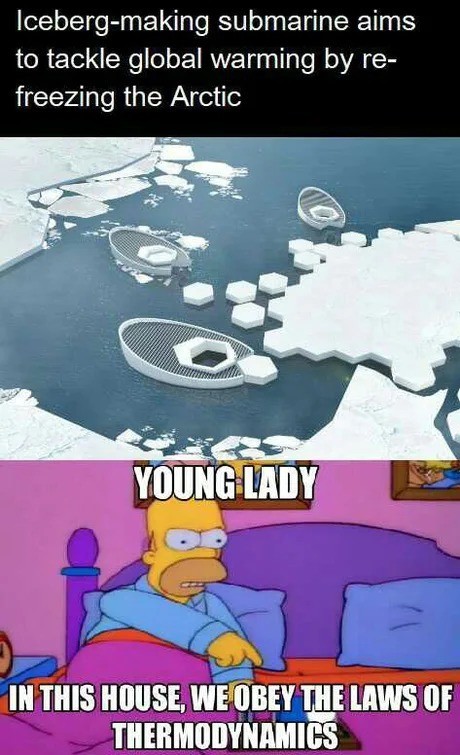
358K notes
·
View notes
Photo



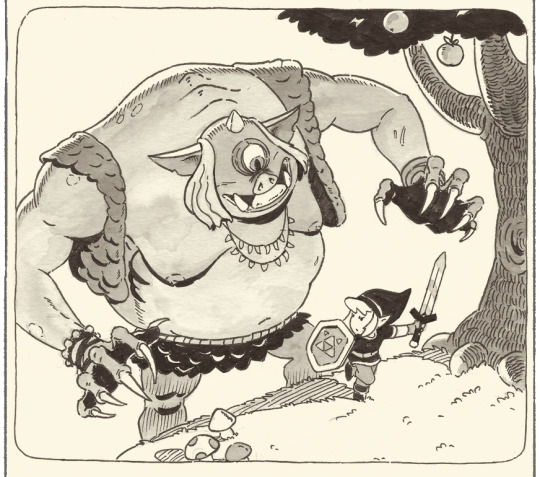

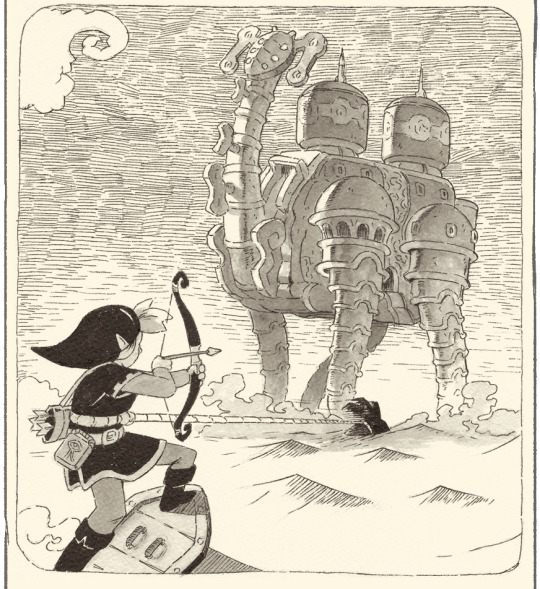
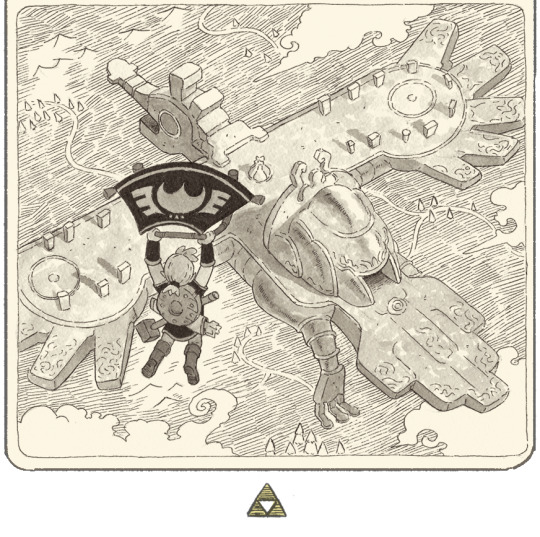
The Legend of Zelda - 35th Anniversary
Series by Israel Breslav || IG
5K notes
·
View notes
Photo

Jewish people praying at the grave of Rabbi Nachman of Breslav in Uman, Ukraine; 2006. x
Rabbi Nachman, the great-grandson of the Baal Shem Tov, was an important figure in the Hasidic movement and attracted thousands of followers during his lifetime by combining Kabbalah with in-depth Torah study. His influence continues even until today through many Hasidic movements such as Breslov Hasidism. Rebbe Nachman's Jewish philosophy revolved around closeness to G-d and speaking to G-d in normal conversation "as you would with a best friend." His grave, located in Uman, Ukraine, remains an important pilgrimage site for many Hasidism.
63 notes
·
View notes
Text
"Non chiedere mai la strada a qualcuno che la conosce,
non ti sarebbe più possibile perderti."
— Rabbi Nachman di Breslav
#perdersi#ritrovarsi#strada#non capire#capire#imparare#lezione#frasi vita#vita#frasi belle#frasi tumblr#frasi vere#frasi intelligenti#frasi interessanti#frasi e citazioni#Rabbi Nachman di Breslav#frasi#ragazzoarcano
66 notes
·
View notes
Quote
He (Nachman of Breslav) said: 'The World has tasted nothing yet. If they would hear just one of my teachings together with its melody and dance, they would all submit completely. The entire world, even the animals and plants - everything - all would submit completely. Their very souls would faint from the sheer wondrous ecstasy. Also, each person who is closer, his movements happen of their own accord, as he senses that mentioned above. Whoever is closer to the melody and dance understands more and performs the melody's movements automatically due to this great pleasure.... Likewise, the closer one is to the holy, that is - the closer to the teachings, the song and the dance - the more the movements occur on their own owing to the holiness. All this I heard myself.
The Scroll of Secrets. The hidden messianic vision of R. Nachman of Breslav Academic Studies Press 2010
21 notes
·
View notes
Photo





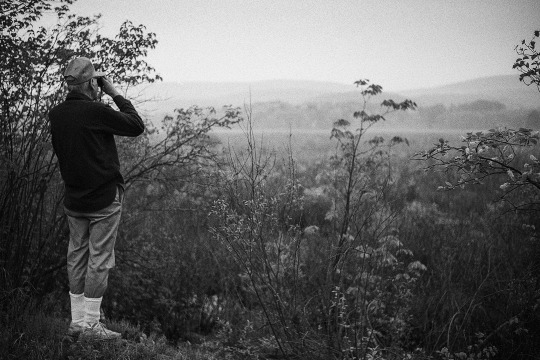
Thirty Years Ago—and a Loss
I heard of a passing recently: Ralph Odell. In one of my previous lifetimes, I was able to go birding with three fellows: Henry Turner, Marc Breslav, and Ralph Odell—I was privileged to be on a bird-a-thon team with them in both 1990 and 1991. This was out of the Putnam Highlands Audubon Society, fifty miles north of New York City, in Philipstown, across the Hudson from West Point.
A bird-a-thon is a competitive event where teams strive to see as many species they can in a 24-hour period. We used this activity to raise money for our chapter, and would be successful enough to put up a building at Constitution Marsh Sanctuary, in Garrison, New York.
I had become a rabid birder immediately after moving out of Brooklyn in the spring of 1989. I fell in with the Audubon crowd in Garrison and made acquaintance with Marc Breslav (bearded fellow seen here). He, in turn, invited me to join their bird-a-thon team in 1990. Henry Turner (man with mustache here) was an outstanding birder who traveled the world building his life-list; he took me under his wing and taught me much about birding, for which I’m thankful. Ralph Odell (clean-shaven, seen alone in final image above) was a kind, older gentleman, soft-spoken, widower, who had been a school teacher in Garrison. Despite me being green, we won the competition during my first year, that of 1990.
I believe we typically began on Jones Beach, and Jamaica Bay, on Long Island, and worked our way back up to Putnam County. We’d then go further north and west, to Bashakill Marsh, over in Sullivan County, then back down to Bear Mountain, and other nice spots around the Hudson River. The point is to hit as many types of habitats as possible, and thus see the most species. After our win, I would be awarded a free week’s stay at the National Audubon’s camp on Hog Island, Maine.
But more importantly than that, I got to hang out with these people—we had fun, enjoyed the out-of-doors, and raised money for an organization that looks after the health of migratory bird species. I remember Ralph being a nice man, but it’s been a long time—his obituary reminded me of what I did know about him, and informed me of things about his life I did not know—I’ll link it here. I wish I’d spent more time with him when I had the chance.
Six images by Richard Koenig; taken in the state of New York during the years of 1990 and 1991.
#audubon#birdathon#putnamcounty#garrisonnewyork#jonesbeach#bashakillmarsh#constitutionmarsh#hudsonriver#philipstown#sullivancounty#newyorkstate#jamaicabay
3 notes
·
View notes
Quote
Gauge a country’s prosperity by its treatment of the aged.
Rabbi Nachman of Breslav
69 notes
·
View notes
Video
youtube
https://www.youtube.com/watch?v=L46FKTsSGeY
Naomi Shemer is so much more than just “Yerushalayim Shel Zahav.” This is the Zamir Chorale of Boston performing her “Shirat Ha-asavim,” or “The Song of the Grasses.” The text is a little bit remote and mystical, derived from Rabbi Nachman of Breslav. It posits that every blade of grass (by extension, all of the natural world) has its own particular song, and all of these songs blend together to inspire the poetry of a shepherd, which then fills the heart with joy and love for the Divine, shining light on Israel and creating a second, deeper melody of the heart. The gentle music and overlapping voices of the choir really do evoke a field of swaying prairie grass (well, to me, at any rate; there aren’t much in the way of prairies in the Levant), and there’s a slightly otherworldly quality to the sound that reminds us that prayer does not necessarily have to come from human actors.
3 notes
·
View notes
Link
רבי נחמן מלמד אותנו שהכול תלוי באמונה - גם הפרנסה, גם השמחה וגם היכולת לתת ביד רחבה. חג הפסח, חג האמונה, הוא הזמן להתחזק באמונה שה' זן ומפרנס לכל. אחת המצוות המרכזיות של החג היא *"קמחא דפסחא"*, לדאוג שלכל יהודי יהיו צרכי החג.
כשאדם נותן צדקה לקמחא דפסחא, הוא לא רק עוזר לאחרים - הוא פותח לעצמו שערי שפע. רבי נתן כותב ב"עלים לתרופה" כמה חשוב שאדם ירגיל את עצמו לבטוח בה', שגם אם נראה לו שהמצב הדחוק, עליו לתת מתוך שמחה ולדעת שה' יחזיר לו כפל כפליים.
כמו שבני ישראל יצאו ממצ��ים עם מצות בלבד, בלי לדעת מה יקרה מחר, כך גם אנו לומדים מכך לחיות עם אמונה, לתת בלי חשבונות קטנים ולשמוח שה' מנהיג את עולמו ברחמים.
אז נתחזק בנתינה בשמחה, מתוך ידיעה שכל מה שאדם נותן - הוא בעצם מקבל פי כמה, ברוחניות ובגשמיות.
*"וצדקתו עומדת לעד"* - הצדקה שלך בונה לך חיי נצח, ופותחת שערי השפע גם בעולם הזה!
חג פסח כשר ושמח
*כנסו והרשמו לקבוצה - חיזוקים ותפילות מהלב שלי*
https://chat.whatsapp.com/IGLYpXQQekQK4cIgACyYFz
0 notes
Text
Tragédie à Ouman : le cercueil de David Mirilashvili, un habitant d'Ofakim décédé à Roch Hachana va arriver en Israël
Baruch Dayan a émeth : au milieu du Jour du Jugement dernier, le lundi de Roch Hachana, le rabbin David Mirilashvili, le défunt habitant d’Ofakim, s’est soudainement effondré dans la ville d’Ouman près de Sion, le rabbin Nachman de Breslav . Il n’avait que 55 ans au moment de sa mort. Le rabbin David est né en Union soviétique le 29e jour de Menachem Av 5788 de son père, le rabbin Yisrael…

View On WordPress
0 notes
Text
"All the world is a very narrow bridge, and the most important thing is not to be overwhelmed by fear." -Rabbi Nahman of Breslav
"I will close my eyes and imagine my beautiful husband on the other side waiting for me. And I will run accross the lava." -Nott The Brave
35 notes
·
View notes